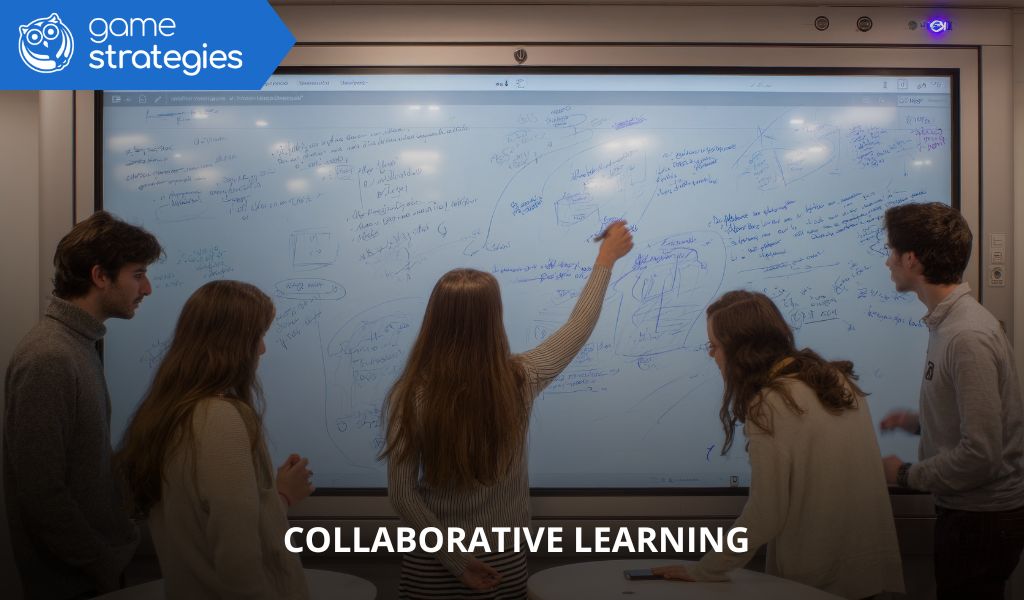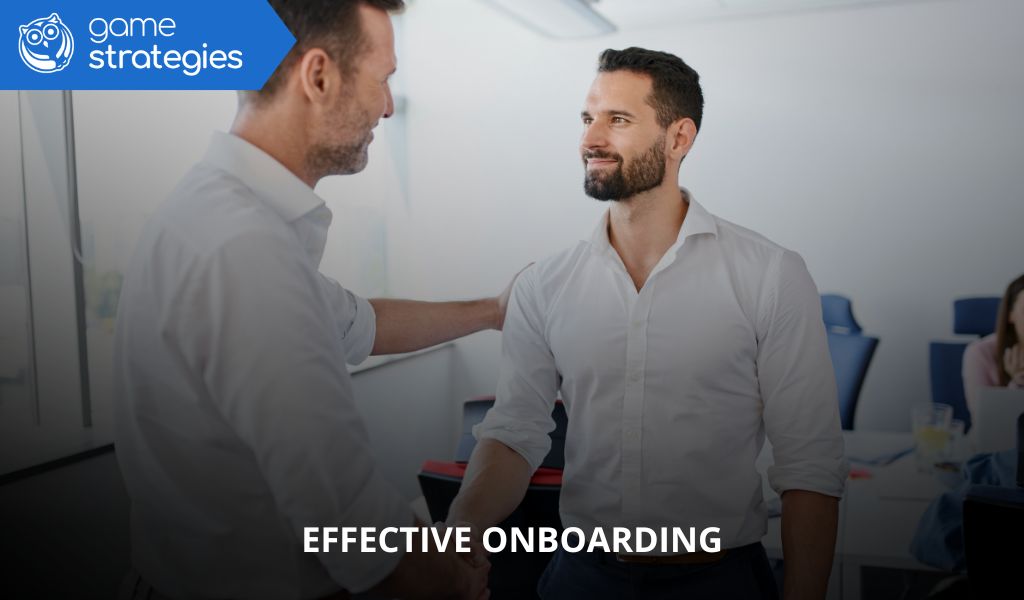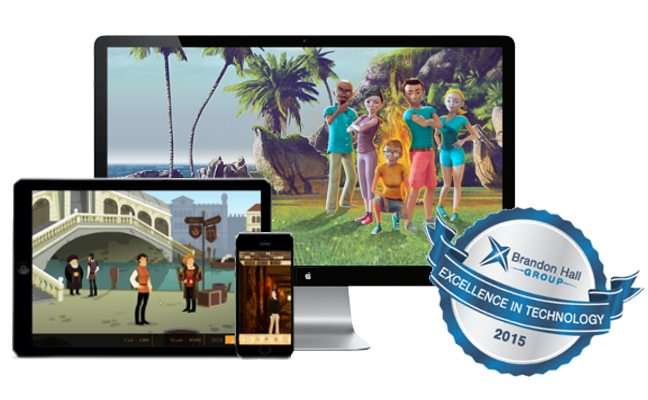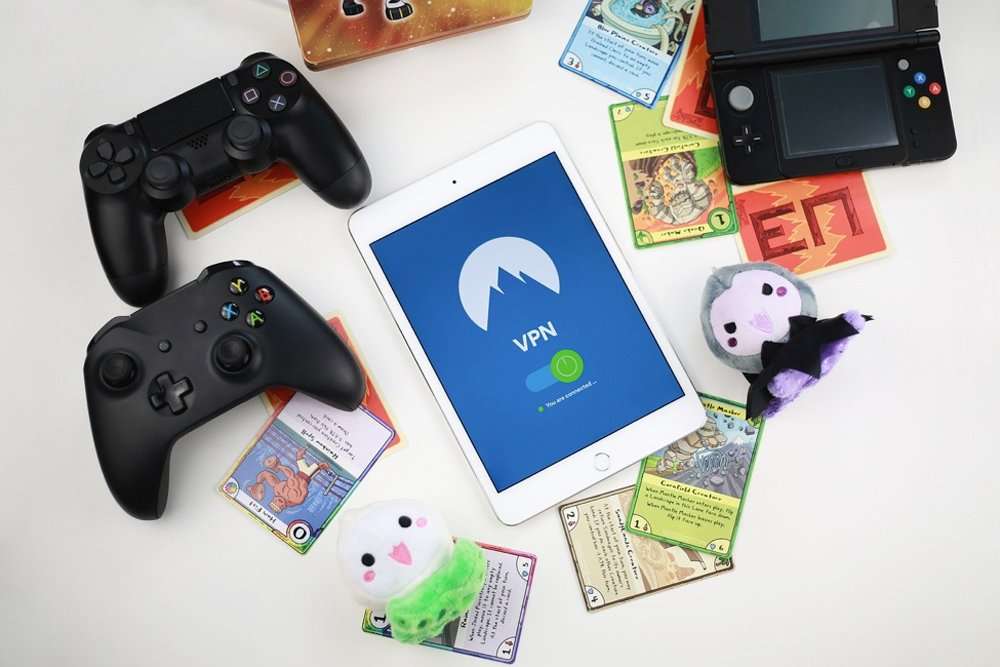In a business context shaped by the digitalisation of corporate training and the need to adapt quickly, collaborative learning has become a cornerstone for developing skills and retaining knowledge. Yet, many training programmes remain anchored in one-way methodologies that fail to encourage real interaction between employees.
Game Strategies addresses this challenge by integrating gamification and artificial intelligence (AI) into collaborative environments, transforming how teams learn, share, and apply new knowledge.
What is the role of collaborative learning in corporate training?
Company versus classroom: key differences in collaboration
In corporate settings, collaborative learning goes beyond sharing ideas: it involves solving real problems, transferring best practices, and building solutions together. Unlike in traditional classrooms, where collaboration is guided by a teacher, in the workplace the initiative must come from the teams themselves.
Impact on engagement, retention, and organisational culture
Well-structured collaboration generates engagement and strengthens a company’s learning culture. Research shows that employees participating in collaborative environments retain up to 25% more knowledge and are more motivated to apply it in their daily work.
Categories of collaborative digital tools that enhance learning
Online boards and mind maps (Miro, MindMeister, Padlet…)
These platforms enable teams to visualise ideas, plan projects, and organise information collectively. They are ideal for brainstorming sessions, strategy design, or complex project planning.
Real-time collaborative editing (Google Docs, Canva, Teams)
These tools allow multiple users to work simultaneously on documents, presentations, or visual materials. They support hybrid learning, enabling teams to collaborate remotely in real time.
Platforms based on social learning and gamification
These integrate forums, challenges, and game mechanics to drive participation. With Game Strategies, such platforms are enriched with AI to personalise the experience and align it with business objectives.
Corporate innovation: how Game Strategies enhances collaborative learning
MARS: turn-based collaborative dynamics
MARS is Game Strategies’ proprietary system that combines turn-based mechanics with group dynamics. It allows teams from different departments to work together on simulated challenges that replicate real business situations.
Group simulations and gamified team projects
Teams collaborate in training simulations that require coordination, problem-solving, and joint decision-making. These activities not only develop soft skills but also strengthen internal cohesion.
AI-powered collaborative role plays
AI-driven scenarios where participants practise skills such as negotiation, customer service, or leadership, receiving real-time personalised feedback.
When, how, and for whom to use each type of tool

Ideal scenarios in corporate settings
- Onboarding: integrating new employees in an interactive way.
- Sales training: reinforcing techniques with team practice.
- Leadership development: working on real cases with rotating roles.
Choosing based on educational objectives: debate vs co-creation vs practice
- Debate and analysis: forums and video conferencing.
- Co-creation: visual boards and shared design tools.
- Simulated practice: gamified platforms powered by AI.
Integration with existing environments (LMS, CRM, digital platforms)
Game Strategies solutions integrate with LMS and CRMs to centralise tracking and connect learning results with business data.
Evidence and metrics on the effectiveness of collaborative learning
Studies showing increased engagement and measurable results
Research in digital corporate training shows that collaborative learning improves knowledge retention and problem-solving by up to 30% compared to traditional methods.
Spanish benchmarks in companies and startups
Spanish companies that have implemented gamified collaborative dynamics report productivity gains and shorter adaptation times for new projects.
The ROI of collaborative learning versus traditional methods
ROI is maximised by reducing errors, accelerating the learning curve, and improving workplace climate—directly contributing to talent retention.
By 2025, collaborative learning will be essential for companies to remain competitive and nurture a culture of continuous learning. Adopting digital tools that foster interaction, co-creation, and shared practice is no longer a trend but a strategic necessity.
With Game Strategies, these tools are enhanced with gamification and AI to deliver collaborative experiences that are measurable, motivating, and aligned with real business objectives.
¿De cuánta utilidad te ha parecido este contenido?
¡Haz clic en una estrella para puntuarlo!
Promedio de puntuación 5 / 5. Recuento de votos: 1
Hasta ahora, ¡no hay votos!. Sé el primero en puntuar este contenido.









